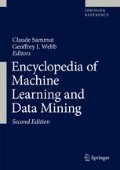Abstract
When applying machine learning techniques to real-world problems, prior knowledge plays a crucial role in enriching the learning system. This prior knowledge is typically defined by domain experts and can be integrated into machine learning algorithms in a variety of ways: as a preference of certain prediction functions over others, as a Bayesian prior over parameters, or as additional information about the samples in the training set used for learning a prediction function. The latter setup is called learning using privileged information (LUPI) and was adopted by Vapnik and Vashist in (Neural Netw, 2009). Formally, LUPI refers to the setting when, in addition to the main data modality, the learning system has access to an extra source of information about the training examples. The additional source of information is only available during training and therefore is called privileged. The main goal of LUPI is to utilize privileged information and to learn a better model in the main data modality than one would learn without the privileged source. As an illustration, for protein classification based on amino-acid sequences, the protein tertiary structure can be considered additional information. Another example is recognizing objects in images; the textual information in the form of image tags contains additional object descriptions and can be used as privileged.
Access this chapter
Tax calculation will be finalised at checkout
Purchases are for personal use only
Recommended Reading
Feyereisl J, Aickelin U (2012) Privileged information for data clustering. Inf Sci 194:4–23
Feyereisl J, Kwak S, Son J, Han B (2014) Object localization based on structural svm using privileged information. In: Neural information processing systems (NIPS), Montreal
Fouad S, Tino P, Raychaudhury S, Schneider P (2013) Incorporating privileged information through metric learning. IEEE Trans Neural Netw Learn Syst 24(7):1086–1098
Hernández-Lobato D, Sharmanska V, Kersting K, Lampert CH, Quadrianto N (2014) Mind the nuisance: Gaussian process classification using privileged noise. In: Neural information processing systems (NIPS), Montreal
Lapin M, Hein M, Schiele B (2014) Learning using privileged information: SVM+ and weighted SVM. Neural Netw 53:95-108
Li W, Niu L, Xu D (2014) Exploiting privileged information from web data for image categorization. In: European conference on computer vision (ECCV), Zurich
Pechyony D, Vapnik V (2010) On the theory of learning with privileged information. In: Neural information processing systems (NIPS), Vancouver
Pechyony D, Vapnik V (2011) Fast optimization algorithms for solving SVM+. In: Statistical Learning and Data Science.
Ribeiro B, Silva C, Vieira A, Gaspar-Cunha A, das Neves J (2010) Financial distress model prediction using SVM+. In: International joint conference on neural networks (IJCNN), Barcelona
Sharmanska V, Quadrianto N, Lampert CH (2013) Learning to rank using privileged information. In: International conference on computer vision (ICCV), Sydney
Vapnik V (1999) The nature of statistical learning theory. Springer, Berlin/Heidelberg
Vapnik V, Vashist A (2009) A new learning paradigm: learning using privileged information. Neural Netw 22(5):544–557
Wang Z, Wang X, Ji Q (2014) Learning with hidden information. In: International Conference on Pattern Recognition (ICPR), Stockholm
Author information
Authors and Affiliations
Corresponding author
Editor information
Editors and Affiliations
Rights and permissions
Copyright information
© 2017 Springer Science+Business Media New York
About this entry
Cite this entry
Sharmanska, V., Quadrianto, N. (2017). Learning Using Privileged Information. In: Sammut, C., Webb, G.I. (eds) Encyclopedia of Machine Learning and Data Mining. Springer, Boston, MA. https://doi.org/10.1007/978-1-4899-7687-1_892
Download citation
DOI: https://doi.org/10.1007/978-1-4899-7687-1_892
Published:
Publisher Name: Springer, Boston, MA
Print ISBN: 978-1-4899-7685-7
Online ISBN: 978-1-4899-7687-1
eBook Packages: Computer ScienceReference Module Computer Science and Engineering

